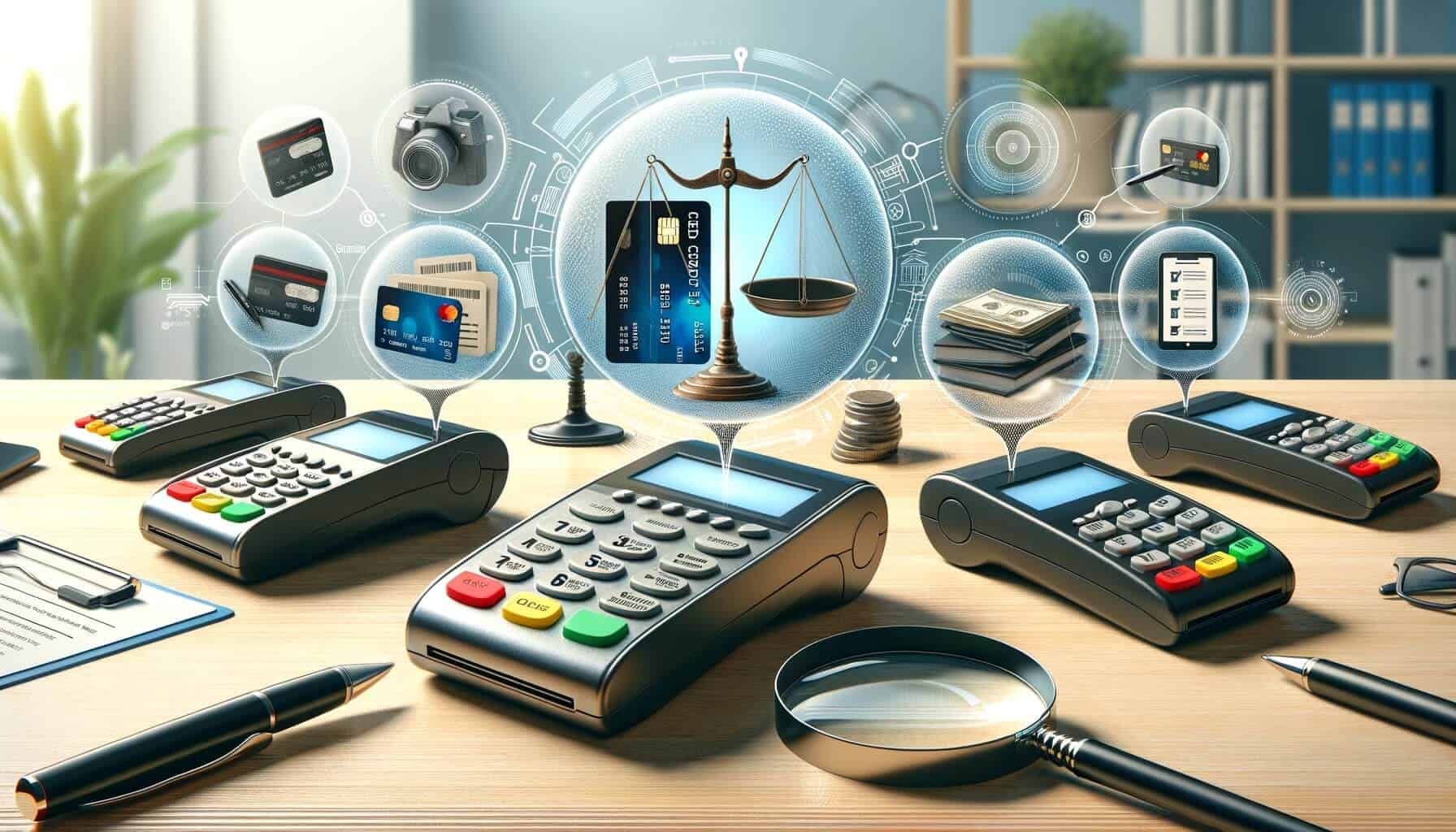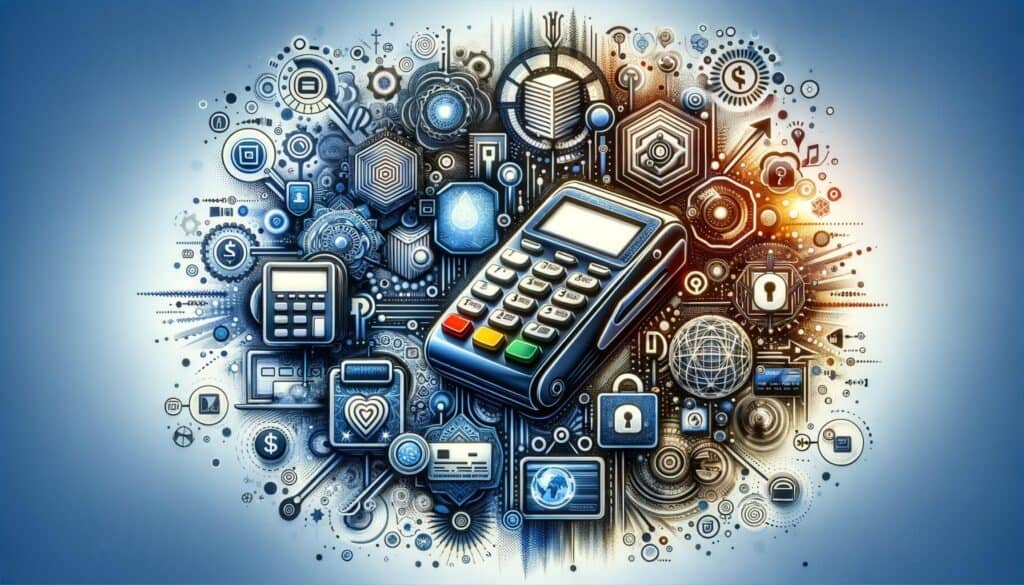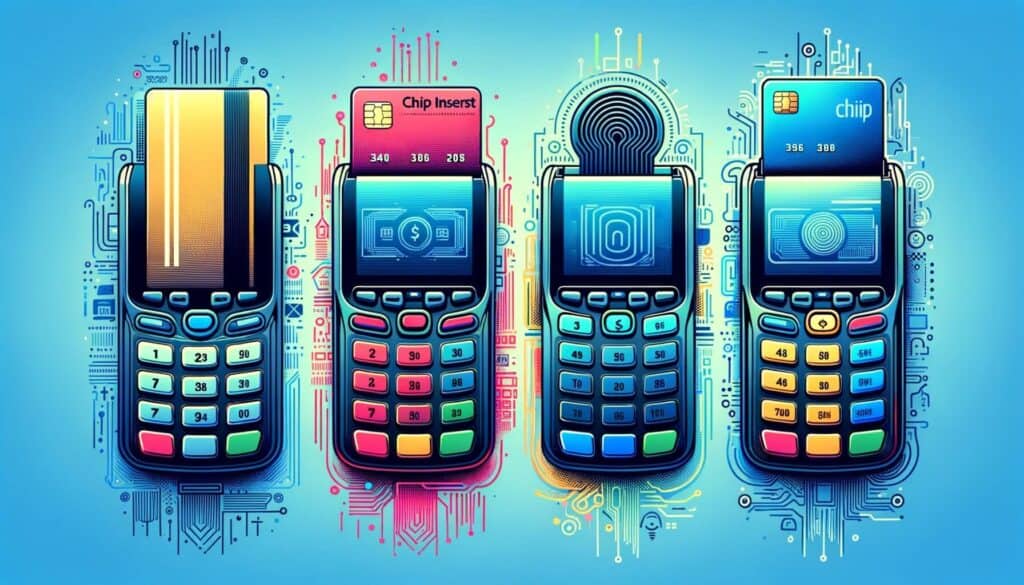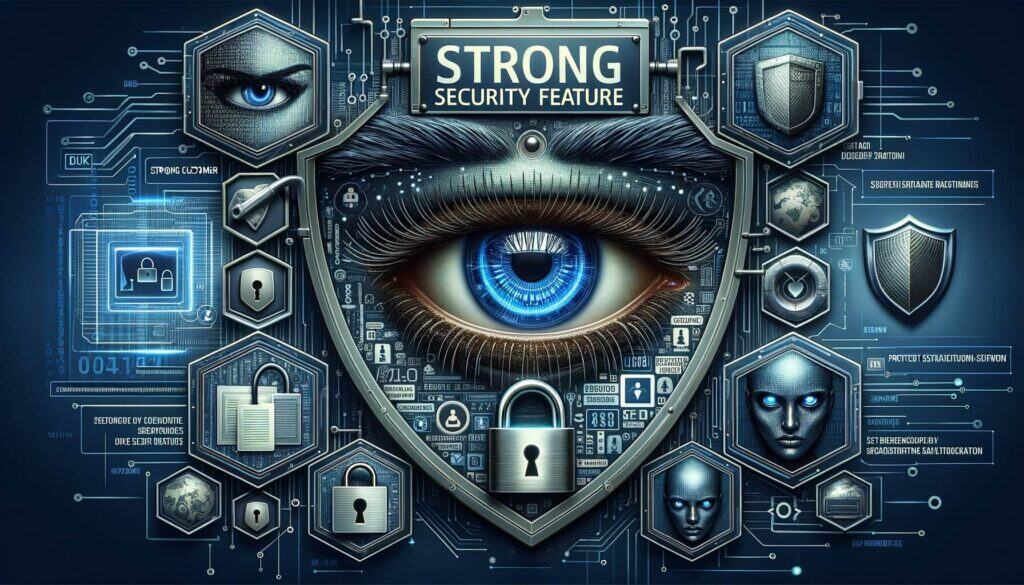
By Ava Owen March 19, 2025
In today’s digital age, accepting credit card payments has become a necessity for businesses of all sizes. Whether you run a small retail store or a large e-commerce platform, having a reliable and efficient credit card reader is crucial for seamless transactions. However, with the plethora of options available in the market, choosing the right credit card reader can be a daunting task.
This comprehensive guide aims to help you navigate through the decision-making process by providing valuable insights into the factors to consider, types of credit card readers, payment processing and compatibility, security features, additional functionality, and pricing and fees.
Factors to Consider When Choosing a Credit Card Reader

Before diving into the different types, it is essential to understand the factors that should influence your decision-making process. Here are some key considerations to keep in mind:
1. Business Type and Needs: The nature of your business plays a significant role in determining the type of credit card reader you should choose. For instance, if you have a mobile business, a portable and wireless card reader would be more suitable. On the other hand, if you have a brick-and-mortar store, a countertop card reader might be a better option.
2. Compatibility: Ensure that the card reader you choose is compatible with your existing point-of-sale (POS) system or software. Compatibility issues can lead to inefficiencies and delays in processing payments, which can negatively impact your business operations.
3. Ease of Use: Look for a credit card reader that is user-friendly and intuitive. Your staff should be able to quickly learn how to operate it, minimizing training time and potential errors during transactions.
4. Connectivity Options: Consider the connectivity options available with the card reader. Some readers offer multiple options such as Bluetooth, Wi-Fi, or USB, providing flexibility in how you connect to your POS system or mobile device.
5. Customer Support: Opt for a credit card reader that comes with reliable customer support. In case of any technical issues or questions, having access to knowledgeable and responsive support can save you time and frustration.
6. Cost: While cost should not be the sole determining factor, it is essential to consider the upfront cost, transaction fees, and any additional charges associated with the credit and debit card reader. Finding a balance between affordability and functionality is crucial.
Types of Credit Card Readers: A Comprehensive Overview

Now that we have discussed the factors to consider, let’s delve into the different types of credit and debit card readers available in the market. Understanding the features, pros, and cons of each type will help you make an informed decision for your business.
1. Mobile Credit Card Readers: Pros and Cons
Mobile credit card readers have gained immense popularity in recent years due to their convenience and portability. These readers can be easily connected to a smartphone or tablet, allowing businesses to accept payments on the go. Here are some pros and cons of mobile credit card readers:
Pros:
1. Portability: Mobile card readers are compact and lightweight, making them ideal for businesses that operate outside of a traditional brick-and-mortar setting.
2. Cost-effective: They are often more affordable compared to traditional countertop readers, making them a suitable option for small businesses or startups with limited budgets.
3. Quick and easy setup: Most mobile credit card readers can be set up within minutes, requiring minimal technical expertise.
4. Versatility: Mobile credit card readers can accept various payment methods, including chip cards, contactless payments, and mobile wallets.
Cons:
1. Reliance on smartphones or tablets: Mobile credit card readers require a compatible smartphone or tablet to function. If your device malfunctions or runs out of battery, it can disrupt your ability to accept payments.
2. Connectivity issues: Depending on your location, you may encounter connectivity issues, especially in areas with weak or no cellular reception.
3. Limited functionality: While mobile credit card readers offer basic payment processing capabilities, they may lack advanced features such as inventory management or customer relationship management (CRM) integration.
2. Traditional Credit Card Readers: Pros and Cons
Traditional credit card readers, also known as countertop readers, are the more traditional option for businesses that primarily operate from a fixed location. These readers are typically connected to a POS system or computer and offer a range of features. Let’s explore the pros and cons of traditional card readers:
Pros:
1. Reliability: Traditional credit card readers are known for their stability and reliability. They are designed to handle high transaction volumes without compromising performance.
2. Advanced features: Countertop readers often come with advanced features such as inventory management, employee tracking, and integration with other business tools.
3. Enhanced security: Traditional readers are equipped with robust security measures, including encryption and tokenization, to protect customer data and prevent fraud.
4. Compatibility: These readers are compatible with a wide range of POS systems and software, providing flexibility for businesses with existing infrastructure.
Cons:
1. Limited mobility: Unlike mobile credit card readers, traditional readers are fixed to a specific location. If your business requires mobility, such as attending trade shows or pop-up events, a countertop reader may not be the most suitable option.
2. Higher upfront cost: Traditional card readers often come with a higher upfront cost compared to their mobile counterparts. Additionally, there may be additional fees for software licenses or maintenance.
3. Longer setup time: Setting up a traditional credit card reader may require technical expertise and more time compared to mobile readers.
Understanding Payment Processing and Compatibility

When choosing a credit card reader, it is crucial to understand the payment processing and compatibility requirements. Payment processing refers to the steps involved in authorizing and transferring funds from a customer’s credit card to your business account. Here are some key aspects to consider:
1. Payment Gateway Compatibility: A payment gateway is a service that securely authorizes credit card transactions between your business and the customer’s bank. Ensure that the credit card reader you choose is compatible with your preferred payment gateway to ensure seamless transaction processing.
2. EMV Compliance: EMV (Europay, Mastercard, and Visa) is a global standard for chip-based credit card transactions. It provides enhanced security compared to magnetic stripe cards. Ensure that the card reader supports EMV transactions to protect your business from liability in case of fraudulent transactions.
3. Contactless Payments: Contactless payments, such as Apple Pay or Google Pay, have gained popularity due to their convenience and speed. Check if the credit card reader supports contactless payments to cater to customers who prefer this payment method.
4. NFC Compatibility: Near Field Communication (NFC) is a technology that enables devices to communicate wirelessly when they are in close proximity. If you want to accept payments through NFC-enabled devices, ensure that the credit card reader supports NFC technology.
5. Mobile Wallet Integration: Mobile wallets, such as Apple Wallet or Google Wallet, allow customers to store their credit card information securely on their smartphones. If you want to accept payments through mobile wallets, ensure that the credit card reader is compatible with the specific mobile wallet platforms.
Security Features: Ensuring the Safety of Customer Data

In an era where data breaches and identity theft are prevalent, prioritizing the security of customer data is of utmost importance. When choosing a credit card reader, consider the following security features:
1. Encryption: Look for a credit card reader that offers end-to-end encryption. This ensures that sensitive customer data is securely transmitted and stored, reducing the risk of unauthorized access.
2. Tokenization: Tokenization is a process that replaces sensitive cardholder data with a unique identifier or token. This adds an extra layer of security by ensuring that even if the token is intercepted, it cannot be used to retrieve the original card data.
3. PCI Compliance: The Payment Card Industry Data Security Standard (PCI DSS) is a set of security standards that businesses must adhere to when handling credit card information. Ensure that the credit card reader you choose is PCI compliant to meet these requirements and protect your business from potential penalties.
4. Fraud Prevention: Look for credit card readers that offer additional fraud prevention measures, such as address verification service (AVS) and card verification value (CVV) checks. These features help reduce the risk of fraudulent transactions and protect your business and customers.
Additional Features and Functionality to Consider
Apart from the essential features discussed above, credit card readers may offer additional functionality that can enhance your business operations. Consider the following features when making your decision:
1. Inventory Management: Some credit card readers offer inventory management capabilities, allowing you to track stock levels, manage product variations, and generate reports. This feature can streamline your inventory management processes and prevent stockouts or overstocking.
2. Customer Relationship Management (CRM) Integration: CRM integration enables you to capture customer data during the payment process and store it in your CRM system. This data can be used to personalize marketing campaigns, track customer preferences, and improve customer loyalty.
3. Reporting and Analytics: Look for a credit card reader that provides comprehensive reporting and analytics features. These features can help you gain insights into your sales performance, customer behavior, and identify trends or patterns that can inform your business strategies.
4. Multi-Currency Support: If your business operates internationally or caters to customers from different countries, consider a credit card reader that supports multiple currencies. This feature simplifies the payment process for international customers and eliminates the need for manual currency conversions.
5. Receipt Printing: Depending on your business requirements, you may need a credit card reader that can print receipts for customers. Some devices offer built-in receipt printers, while others may require a separate printer to be connected.
Comparing Pricing and Fees: Finding the Best Value for Your Business
When choosing a credit card reader, it is essential to compare pricing and fees to find the best value for your business. Here are some key points to consider:
1. Upfront Cost: Evaluate the upfront cost of the credit card reader, including any hardware or software fees. Consider your budget and the features offered to determine if the cost is justified.
2. Transaction Fees: Most payment processing providers charge transaction fees for each payment processed. Compare the transaction fees offered by different providers to find the most competitive rates for your business.
3. Monthly Fees: Some credit card readers may have monthly fees for additional features or services. Assess whether these fees align with the value they provide to your business.
4. Contract Terms: Pay attention to the contract terms associated with the credit card reader. Some providers may require long-term contracts or charge early termination fees. Read the terms and conditions carefully to avoid any surprises.
5. Hidden Fees: Be aware of any hidden fees that may not be explicitly mentioned. These can include statement fees, PCI compliance fees, or chargeback fees. Ask the payment processing provider for a comprehensive breakdown of all potential fees to make an informed decision.
FAQs
Q.1: What is the difference between a mobile credit card reader and a traditional credit card reader?
Answer: A mobile credit card reader is a portable device that can be connected to a smartphone or tablet, allowing businesses to accept payments on the go. On the other hand, a traditional credit card reader is a standalone device that is typically connected to a landline or internet connection and is stationary.
Q.2: How much does a credit card reader cost?
Answer: The cost of a credit card reader can vary depending on the features and capabilities it offers. Mobile credit card readers are generally more affordable compared to traditional credit card terminals. Prices can range from as low as $20 for basic mobile credit card readers to several hundred dollars for advanced traditional credit card terminals.
Q.3:Can I use my existing payment gateway with a credit card reader?
Answer: Compatibility with your existing payment gateway is an important factor to consider when choosing a credit card reader. Ensure that the device you choose is compatible with your preferred payment gateway to ensure seamless transaction processing.
Q.4: How can I ensure the security of customer data when using a credit card reader?
Answer: To ensure the security of customer data, choose a credit card reader that is PCI DSS compliant and offers encryption and tokenization features. These security measures protect sensitive information from unauthorized access or interception.
Q.5: Can a credit card reader integrate with my existing business tools or software?
Answer: Many credit card readers offer integration capabilities with other business tools or software, such as accounting or inventory management systems. Integration can streamline your operations and provide valuable insights into your business performance.
Conclusion
Choosing the right credit card reader for your business is a crucial decision that can significantly impact your operations and customer experience. By considering factors such as your business type and needs, compatibility, ease of use, connectivity options, customer support, and cost, you can narrow down your options and make an informed choice.
Whether you opt for a mobile credit card reader or a traditional countertop reader, ensure that it offers the necessary payment processing and security features, as well as any additional functionality that can enhance your business operations. Lastly, compare pricing and fees to find the best value for your business. With careful consideration and research, you can select a credit card reader that meets your requirements and sets your business up for success in the digital age.